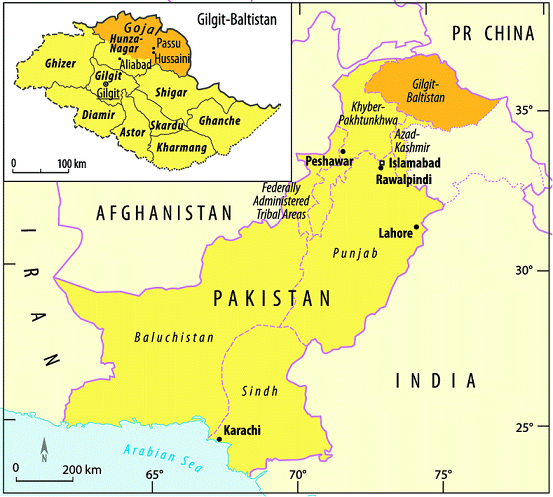Focus: GS-I Art and Culture, Geography, Prelims
Why in news?
India has reacted strongly to reports of vandalism and defacement of ancient Buddhist rock carvings in Gilgit-Baltistan under Pakistan’s control.
Buddhist Carvings in Gilgit-Balistan
- Before arrival of Islam in the region of Gilgit-Baltistan the majority of the people were Buddhist and they had engraved the Buddha on many rock pieces.
- This Buddha carving was not known to the world till beginning of 20th century due to its remote location.
- Kargah Buddha is an archaeological site located about 9.7 km outside of Gilgit. It is a carved image of a large standing Buddha, some 50 feet high, in the cliff-face in Karghah Nala. The carving, which is in a style also found in Baltistan, probably dates to the 7th century.
- Manthal Buddha Rock is a large granite rock on which picture of Buddha has engraved which probably dates back to 8th century.
Gilgit-Baltistan

- Gilgit-Baltistan is a region administered by Pakistan as an administrative territory, and constituting the northern portion of the larger Kashmir region which has been the subject of a dispute between India and Pakistan since 1947, and between India and China from somewhat later.
- Gilgit-Baltistan is part of the greater Kashmir region, which is the subject of a long-running conflict between Pakistan and India.
- The territory shares a border with “Pakistan administered Kashmir” (Called Azad Kashmir by Pakistan) and union territories of Jammu and Kashmir (union territory) and Ladakh separated from it by the Line of Control.
- Pakistan is a federation that comprises four provinces: Punjab, Khyber Pakhtunkhwa, Sindh and Balochistan and three territories: Islamabad Capital Territory, Gilgit–Baltistan and Azad Kashmir (according to Pakistan).
-Source: Hindustan Times



